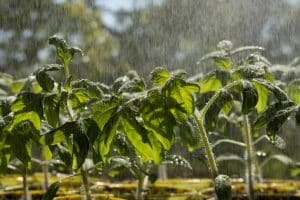We’re officially in the dog days of summer, and all the labour I’ve been pouring into my tomato plants is paying off. Every day, I have more perfectly red tomatoes begging to be plucked off the plant and plunked into a salad. This system was working out really well for me until a nasty surprise caught me off-guard the other day. As I went to greet the day’s harvest, I discovered that one of my plants was not looking so hot. As I looked closer, my heart sank. My poor tomato plant had fallen victim to blight.
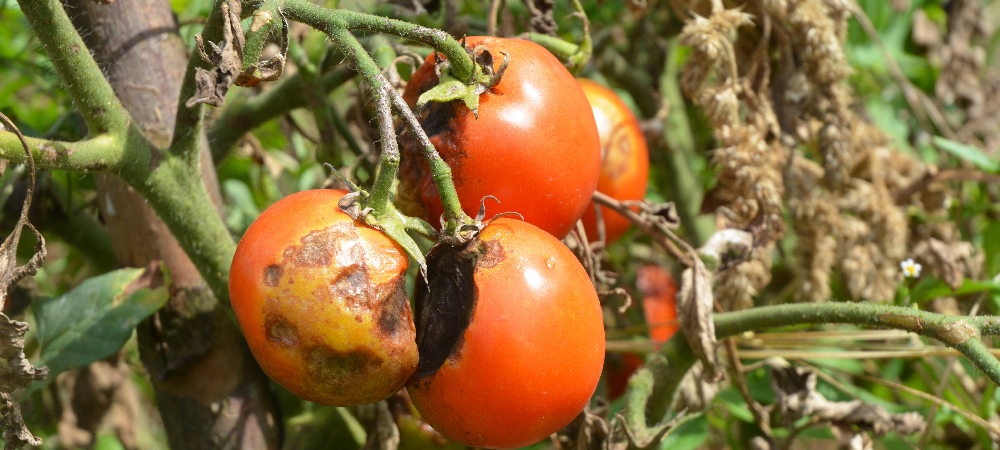
What Is Blight?
Blight is actually a symptom of many diseases and not a disease of its own. By definition, blight itself is the progression of chlorosis, which is the condition of plant tissue that isn’t producing enough chlorophyll. This leads to the tissue turning brown and dying off. There are a handful of common diseases known as “blights”, due to blight as the main symptom, that we commonly see in Edmonton gardens.
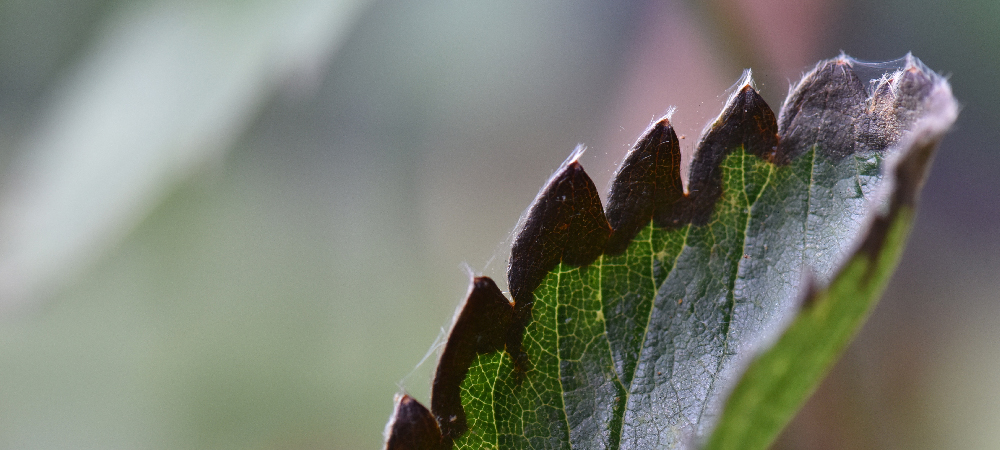
Early Blight
Early blight is a disease caused by the fungal pathogen Alternaria solani. The disease overwinters through our harsh Alberta winters and causes mayhem in affected vegetable gardens.
Early Blight Symptoms
Tomato and potato plants are the most common plants to show symptoms of early blight. When affected by early blight, tomato plants and potato plants will first show brown spots on the leaves that form a distinctive “bullseye” pattern. The disease will gradually spread to the whole leaf and progressively affect the whole plant. The pathogen will also hide in the soil, transmitting easily to other plants. Wet conditions and high temperatures, like the ones we’ve been having lately in Edmonton, are major risk factors for the spread of early blight.
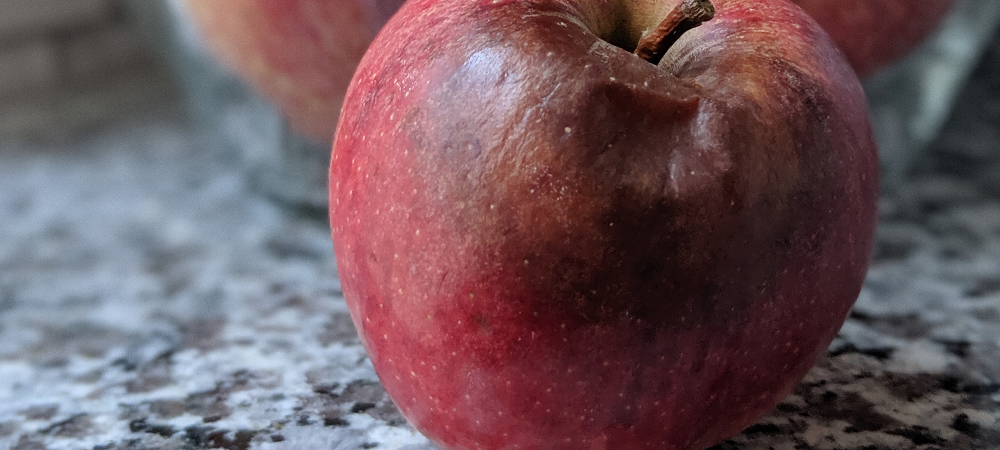
Early Blight Treatment
Once you’ve been hit with early blight, it’s in your best interest to do anything you can to slow the spread. Remove all parts of the plant that appear affected and burn it or toss it in the garbage”” the compost is the last place you want those pathogens to end up. Prune and stake the branches of your tomato or potato plants to promote plenty of airflow, which can slow the disease down.
Since splashes of water containing the pathogen are a primary way the disease spreads, the next thing you’ll want to do is cover the soil with fresh compost to keep the pathogens from splashing up again.
Finally, pick up an appropriate fungicide from our garden centre in Edmonton. Fungicides are a preventative treatment, not a cure. Apply this product only before a period of wet weather is expected to set in, when the risk is at its highest.
Don’t bother trying to use it to cure plants that show signs of early blight. Only a (well-disinfected!!) pair of garden shears will help you with that. Disinfect garden shears with a bleach-soaked rag after pruning a plant with early blight symptoms.
At the end of the season, destroy all the plant material in the vicinity of the infection and replace the soil as much as possible. I recommend growing your tomatoes or potatoes somewhere else the following year in case some pathogens have stuck around.
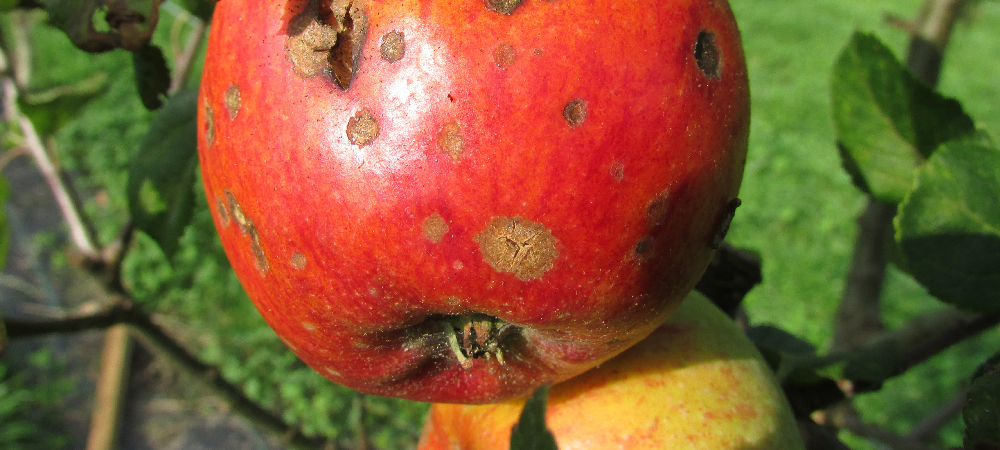
Late Blight
Another common garden blight is late blight, which got its claim to fame as the cause of the Irish potato famine. This reviled disease is caused by the pathogen Phytophthora infestans. Also common in tomato and potato plants, late blight is a fast-acting, ugly-looking disease that makes quick work of killing off your garden.
Late Blight Symptoms
Late blight of tomato and potato plants starts out looking like wilted areas of leaves that have been soaked with water. The lesions appear greyish-green at first and will gradually darken. Over time a white growth will also appear on the underside of the leaf; this growth produces the spores that transmit the disease. Eventually, the life cycle of the growth will end, leaving dark brown lesions similar in appearance to early blight lesions.

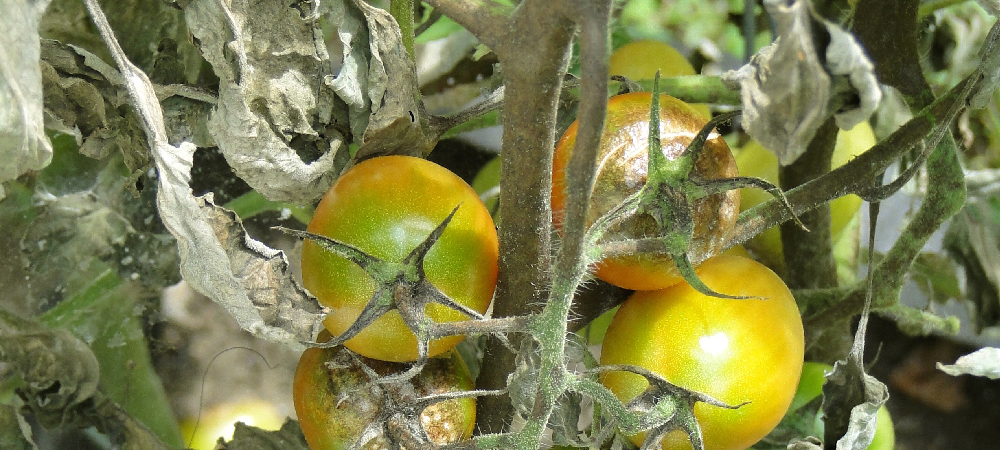
Late Blight Treatment
While late blight doesn’t overwinter like early blight, it does spread quickly. Remove all affected tissue immediately by isolating the tissue in a plastic bag and disposing of it in the garbage. Since the spores can easily spread while removing the affected parts, an application of fungicide can be helpful to prevent the disease from taking hold on nearby plants. Most late blight fungicides are copper-based but there are also a few that use beneficial bacteria to fight off the nasties.
While these are the most common blights you’ll find in the garden, fire blight is another fairly common blighting disease to look out for. I wrote an article about it for the Edmonton Journal if you want to find out more about this disease, which primarily affects fruit trees.
Blight is a total bummer to find in your garden, but if you catch it early enough, your veggie harvest won’t be completely doomed. If I can leave you with one last tip to prevent these wretched diseases from developing, always water your plants in the morning! The daytime sun will have plenty of time to dry up all that standing water, and your plants will be better for it.

